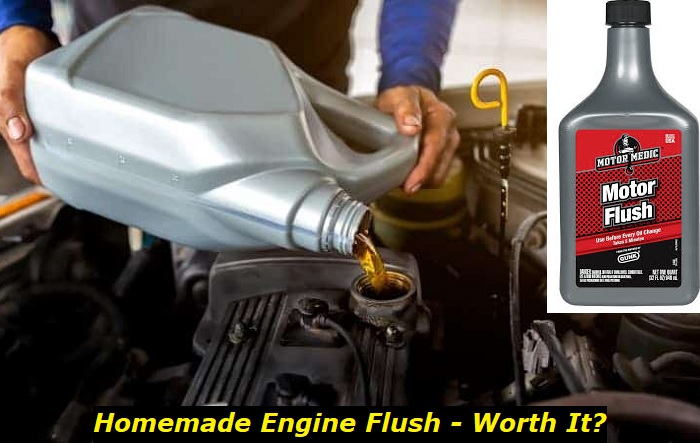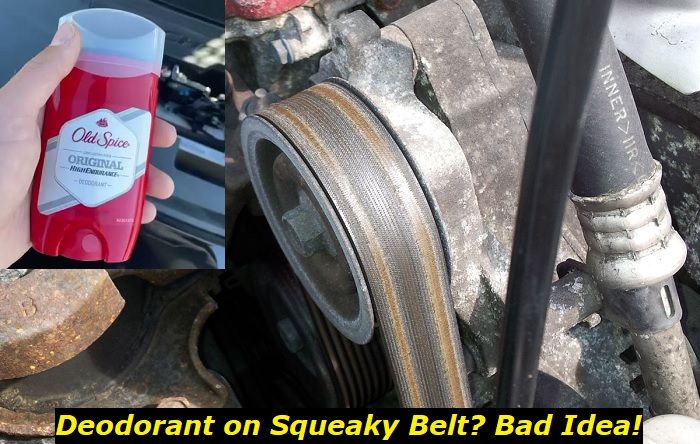When it comes to DIY homemade engine flush, things become tangled. You can prepare it from ATF, various engine oil types, diesel, kerosene, and other materials. But you never know if this actually cleans the engine or makes the contamination level in it even worse than before.
Engine flush additives highlights
- Efficiency:negative or zero
- Availability:limited choice
- Average price: $85
- Way to use:pour instead of engine oil
- DIY use:possible but complicated
- Experts' advice:mixed advice
- Independent testing:may be positive in some cases
- Consequences:cleaned sludge and buildups may clog the engine

Why do you need to flush the engine?
I've never seen in any manual of any car manufacturer that you should flush the engine after some time or after it drives a certain number of miles. But people will say that's because car manufacturers don't care about what happens with their vehicles after the warranty period is over. OK, well, that may be true, but if you ask a good and experienced mechanic, they will also tell you that engine flush is rather a myth.
You may actually need to flush the engine in the following cases:
- you poured some improper oil and drove the car for some time, now you need to clean the crankcase before using the proper type of oil;
- the engine was sitting for years and now you want to drive the car - in this case, flushing is important before you continue using this vehicle;
- the oil in the crankcase got mixed with antifreeze because of gasket problems and now you need to flush it well to eliminate all the traces of the problem;
- you discovered that the oil in the engine was mixed with something else and lost its properties, now you need to clean the engine before you change the oil.
In all other cases, flushing the engine is just throwing away your money and time. The engine oil will clean your engine very well - this is just what it does all the time when you are driving the car. After about 6-10 thousand miles (depending on the engine), you will change the oil and all the contaminants will be out. After that, you will add new oil and it will start cleaning the engine again.
So, in most cases, flushing the engine is not needed at all. What's more, it can harm the engine if done with some mistakes in the process.
What about homemade engine flush solutions?
I was surprised when I searched the forums for advice on homemade solutions for flushing the engine. Some guy even offered to pour two liters of gasoline into the crankcase and run the engine for several minutes. You can't even imagine how bad it can be in the end.
Here are the most common tips on homemade engine flush:
- ATF - pretty simple idea that the low-viscosity oil should quickly clean the engine and should then be substituted by some decent engine oil;
- Diesel fuel - some people recommend using a liter or two of diesel fuel and running the engine. This is better than gas, but still a very crazy idea;
- Kerosene - some forum experts say that if you run the engine for several minutes with kerosene inside instead of the oil, it will be clean as new, well, I wouldn't recommend this;
- Simple oil plus cleaning additive - you may buy a special additive in any car parts store and use it for cleaning the engine.
Well, all these methods are pretty crazy. You can actually buy the special cleaning oil with high viscosity. This product is made for flushing the engine and it doesn't hurt the parts of the machine. Also, it's safe to use in any kind of internal combustion engine. I still don't think you will need this, but at least this is how industry standards see engine flushing.
Please, don't use any DIY solutions to flush your engine! This may be dangerous for you and for the engine itself!
How to clean the engine properly and safely?
Here, I will offer an alternative method of safe engine cleaning. Here's what you should do:
- drain all the old and contaminated oil from your vehicle;
- inspect the oil and make sure it doesn't have any metal shaves in it;
- after that, fill the engine with the fresh oil that's recommended by the manufacturer;
- drive your car for about 1500 miles in different road conditions and engine speed levels;
- drain the oil and pour another portion of fresh oil in it;
- that's it - your engine is clean now and ready to work well.
Please always use this method if you just need to clean the engine from some deposits in its oil circulation system or if you think that this can help you prolong the life of the machine. This is the only safe and proper way to clean the engine without any potential harm to it.
About the authors
The CarAraC research team is composed of seasoned auto mechanics and automotive industry professionals, including individuals with advanced degrees and certifications in their field. Our team members boast prestigious credentials, reflecting their extensive knowledge and skills. These qualifications include: IMI: Institute of the Motor Industry, ASE-Certified Master Automobile Technicians; Coventry University, Graduate of MA in Automotive Journalism; Politecnico di Torino, Italy, MS Automotive Engineering; Ss. Cyril and Methodius University in Skopje, Mechanical University in Skopje; TOC Automotive College; DHA Suffa University, Department of Mechanical Engineering






Add comment